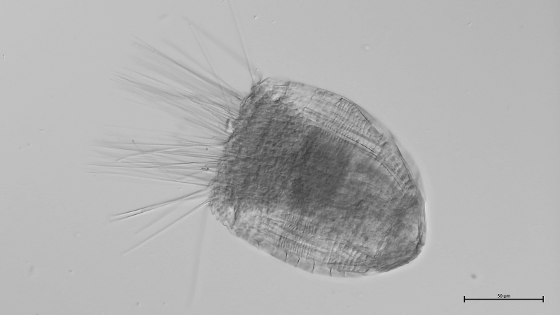Researchers from NatSciCol who also are involved in the Nansen Legacy project have identified the first-ever loriciferan in Norwegian waters. This find was made in the Barents Sea at coordinates 81.53N and 30.96E, at a depth of 806 meters.
The specimen, identified as belonging to the genus Rugiloricus and tentatively classified as Rugiloricus sp., was collected using the research vessel RV Kronprins Haakon in 2019.
Preliminary analysis suggests that this could be a species new to science. However, due to the specimen being partly withdrawn in its lorica (a kind of house), it is currently not suitable for a complete species description.
“This discovery is incredibly exciting,” said PhD student Joel Vikberg Wernström, who found the specimen. “Even though we are unable to fully describe the species at this time, the fact that it is clearly a Rugiloricus species underscores the vast biodiversity that still remains undiscovered in the Norwegian seas.”
The specimen has been cataloged in the collection of the Arctic University Museum of Norway at UiT – the Arctic University of Norway, with accession number TSZY 532. It was identified as part of the Artsdatabanken project “Scalidophora of Norway,” which runs from 2024 to 2026.
This project aims to explore and document the Scalidophora, to which Loriciferans belong, and it is expected that more new species will be discovered.
What is a Loriciferan?
Loriciferans are microscopic marine animals, typically less than 1 mm in size, known for their complex body structure enclosed within a protective lorica. They are part of a group of animals known as Scalidophora, which also includes Kinorhyncha and Priapulida. These animals are usually found in sediment and are known for their unique adaptations to extreme environments, including anoxic conditions.
“The discovery of Rugiloricus sp. highlights the critical importance of continued exploration and study of these remote and challenging environments,” added Andreas Altenburger, a marine biologist involved in the study. “The findings from the ‘Scalidophora of Norway’ project will undoubtedly contribute significantly to our understanding of marine biodiversity.”
The research team is planning further expeditions and studies to hopefully collect more loriciferan specimens that are suitable for a full scientific description. These efforts are crucial for documenting the biodiversity of the region and understanding the ecological dynamics of Norway’s marine ecosystems.
Lenke til nyhet
